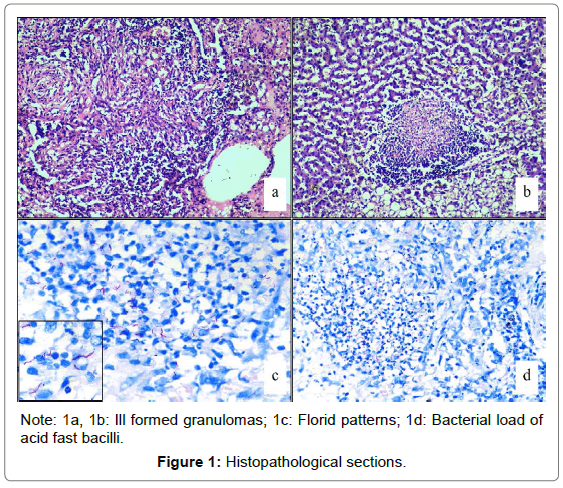Short Communication Open Access
Leproma like Tuberculosis: A Serious Occupational Hazard to Health Care Workers
Singh BL1*, Lobo FD2 and Adiga D21Kasturba Medical College, Mangalore, Karnataka, India
2Manipal Universities, Karnataka, India
- *Corresponding Author:
- Bhagat Singh Lali
Kasturba Medical College
Mangalore, Karnataka, India
Tel: 0820 292 2367
E-mail: lali_dreams@yahoo.com
Received Date: December 23, 2016; Accepted Date: December 28, 2016; Published Date: January 02, 2017
Citation: Singh BL, Lobo FD, Adiga D (2016) Leproma like Tuberculosis: A Serious Occupational Hazard to Health Care Workers. Air Water Borne Dis 6:132. doi: 10.4172/2167-7719.1000132
Copyright: © 2016 Singh BL, et al. This is an open-access article distributed under the terms of the Creative Commons Attribution License, which permits unrestricted use, distribution, and reproduction in any medium, provided the original author and source are credited.
Visit for more related articles at Air & Water Borne Diseases
Short communication
India has the highest burden of tuberculosis (TB) in the world with an estimated incidence of 217 cases per 100000 population and mortality of 36 cases per 100000 population. The most common etiological agent is Mycobacterium tuberculosis but different species of the same genus namely M.avium, M.kansasii and M. ulcerans are also attributed to the illness. Droplet infection by aerosols in the air is the most common mode of transmission of TB among the masses. Higher bacterial load and absence of initiation of treatment increases the secondary attack rate of tuberculosis. With the treatment coverage of 59%, there are very high rates of transmission of the infection among the population [1]. Over 4.3 million health care workers (HCWs) are involved in providing health care facilities to the Indian population at various levels ranging from tertiary health care centres to primary health centres including the community services [2]. Risk of acquiring TB infection is high among these HCWs worldwide but it is particularly high in countries with huge disease prevalence like India [3,4]. World Health Organization (WHO) has long back recommended the infection control guidelines to prevent TB among HCWs but these guidelines have been sub optimally implemented in resource poor settings [5]. Autopsy specimens, comprising of lungs, liver, spleen and kidney, of a 38-year-old patient were received in histopathology laboratory of Kasturba Medical College, Mangalore (a coastal town in southern India) for diagnosis. On studying the histopathological sections, ill formed granulomas composed of epithelioid histocytes, occasional giant cells, lymphocytes and plasma cells were identified in figure 1a and 1b.
Ziehl Neelsen staining for Mycobacteria demonstrated ‘florid’ patterns of abundant long, slender, beaded, acid-fast bacilli in figure 1c. Bacterial load was so high that bunches of acid fast bacilli could be easily identified on 200X magnification in figure 1d. Disseminated miliary tuberculosis was reported as the diagnosis.
In severe immunodeficient states, for example AIDS the lesions might comprise of abundant swollen macrophages with all of them containing huge number of acid fast bacilli. Granulomas are absent or poorly formed and necrosis is not seen. These changes then resemble those of lepromatous leprosy. A leproma like pattern has also been described in disseminated BCG infection [6]. With this case, we want to emphasize that such a huge load of bacilli pose a major threat to all the HCWs who handle such tissue specimens. It is highly recommended that infection control guidelines be followed strictly at all levels of health care and each specimen in any laboratory be handled as potentially infectious, especially so, in the endemic countries.
References
- http://www.who.int/tb/publications/global_report/en/
- Menzies D, Joshi R, Pai M (2007) Risk of tuberculosis infection and disease associated with work in health care settings. Int J Tuberc Lung Dis 11: 593-605.
- http://www.cbhidghs.nic.in/
- Baussano I, Nunn P, Williams B, Pivetta E, Bugiani M, et al. (2011) Tuberculosis among health care workers. Emerg Infect Dis 17: 488-494.
- Kisting S, Wilburn S, Protsiv M, Hsu LN (2010) Improving health workers' access to HIV and TB prevention, treatment, care and support services. World Hosp Health Serv 46: 34-35.
- Corrin B, Nicholson AG (2011) Pathology of the lungs (3rd edn.). Churchill Livingstone, London.
Relevant Topics
Recommended Journals
Article Tools
Article Usage
- Total views: 4309
- [From(publication date):
March-2017 - Sep 04, 2025] - Breakdown by view type
- HTML page views : 3382
- PDF downloads : 927

